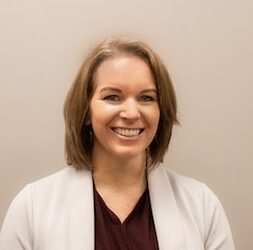Arkansas Colleges of Health Education (ACHE) CEO, Kyle Parker, JD, has an extensive and varied career background, including nationally recognized work within the field of technology. Naturally, he brought this passion for technology to ACHE. Our state-of-the-art facilities, the Arkansas College of Osteopathic Medicine and the recently constructed College of Health Sciences, were built with technological connectivity at the forefront because equipping our students and staff with the right tools has always been a priority.
Although we could have never anticipated COVID-19, it is reassuring that we can continue to fulfill our mission without interruption.
“There is a relationship between technology and education. I wanted technology built from the ground up that would guarantee connectivity and enhance learning for our students. Our doors may be closed, but with our technological resources, we are still moving forward,” said Parker.
Here are some of the ways the technological capabilities at ACHE are allowing us to continue changing the direction of healthcare in Arkansas and beyond:
- Faculty are able to deliver lectures in real-time from home with ease while students spend time with their families throughout the United States.
- Even though the classes are delivered live, all lectures are also recorded so students can access them for reference at a later time with the click of a button.
- We can hold multiple separate video conferences concurrently, and then combine them all together from unique locations to be in one conference without delays.
- All visual aids such as Powerpoint presentations, graphs and videos can be streamed live along with the lectures.
The COVID-19 situation has also provided a unique learning opportunity for our third-year student doctors. Not only does our technology allow them to continue their medical education despite being pulled from clinical rotations sites, it has opened up the opportunity to learn about telemedicine. While we have not implemented anything at this time, we are investigating ways that our third-year students can participate and continue learning with telemedicine. In addition, we’re taking a look at ways our OMS-I and OMS-II students could proceed with standardized patient encounters via telemedicine.
“I hope these students never see a public health crisis like this again, but they will be ready and well-trained to deal with it,” Parker concluded.

